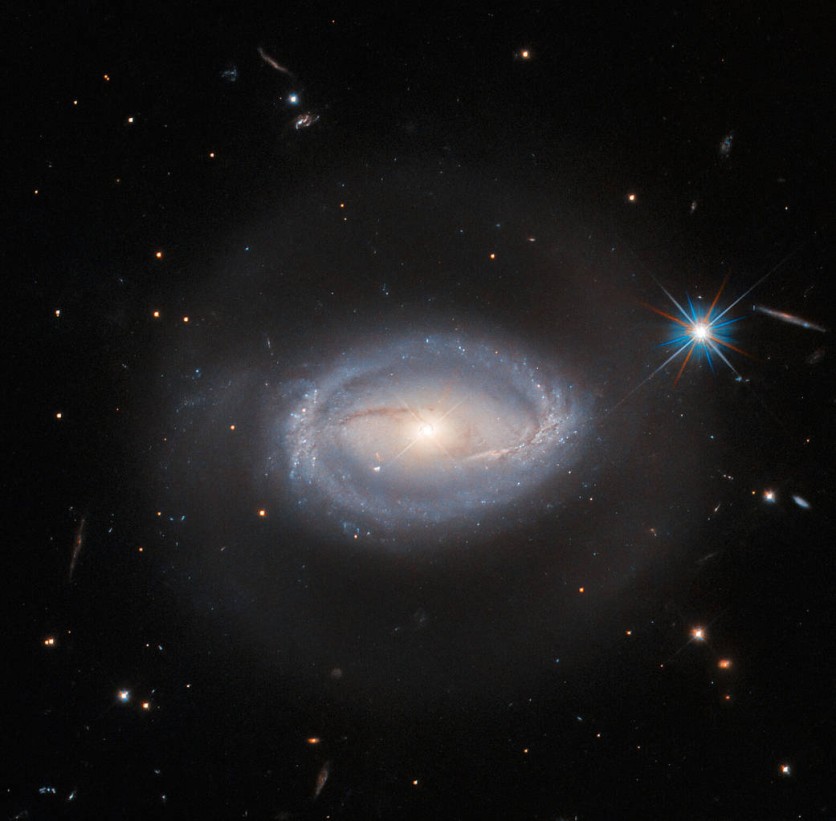NASA's Hubble Space Telescope has captured a fascinating image of a peculiar galaxy that can be considered three cosmic objects all at once.
The galaxy, Z 229-15, is located approximately 390 million light-years away in the constellation Lyra.

All At Once
The Hubble image shows that Z 229-15 is an active galactic nucleus (AGN), a quasar, and a Seyfert galaxy all at once.
An AGN is a small region at the center of certain galaxies, which is far brighter than just the galaxy's stars would be.
This brightness is due to the presence of a supermassive black hole at the galaxy's core, which sucks in surrounding matter and releases energy across the electromagnetic spectrum, making the AGN appear very bright.
Quasars are a particular type of AGN, which are typically both extremely bright and extremely distant from Earth. They are so bright that the rest of the galaxy cannot be seen, making it difficult to determine if they are part of a larger galaxy.
Seyfert galaxies are active galaxies that host very bright AGNs (quasars), while the rest of the galaxy is still observable. So, Z 229-15 is a Seyfert galaxy that contains a quasar, and that by definition, hosts an AGN.
Therefore, Z 229-15 can be classified as all three cosmic objects at once because of the significant overlap in their definitions.
Unique Glimpse Into the World of Galactic Nuclei
The complexity of Z 229-15's classification as an AGN, a quasar, and a Seyfert galaxy highlights the challenges astronomers face when trying to understand celestial objects.
However, the Hubble Space Telescope's powerful imaging capabilities allow astronomers to gain valuable insights into the nature of these objects.
The image of Z 229-15 provides a unique glimpse into the complex world of galactic nuclei and will help astronomers better understand the processes that govern the behavior of these objects.
NASA explains that "Z 229-15 is a Seyfert galaxy that contains a quasar, and that, by definition, hosts an AGN. Classification in astronomy can be a challenge!"
The telescope's ability to capture high-quality images of distant celestial objects continues to advance our understanding of the universe and its many mysteries.
NASA's Hubble Space Telescope has been orbiting Earth since 1990 and has captured countless stunning images of the cosmos.
Its mission is to advance our knowledge of the universe and inspire future generations to explore the final frontier. The latest image of Z 229-15 is yet another testament to the incredible capabilities of this groundbreaking telescope.
Related Article : NASA's Hubble Space Telescope Captures 'Butterfly Nebula' In Stunning Motion | Fun Facts About This Beautiful Space Butterfly

ⓒ 2025 TECHTIMES.com All rights reserved. Do not reproduce without permission.




